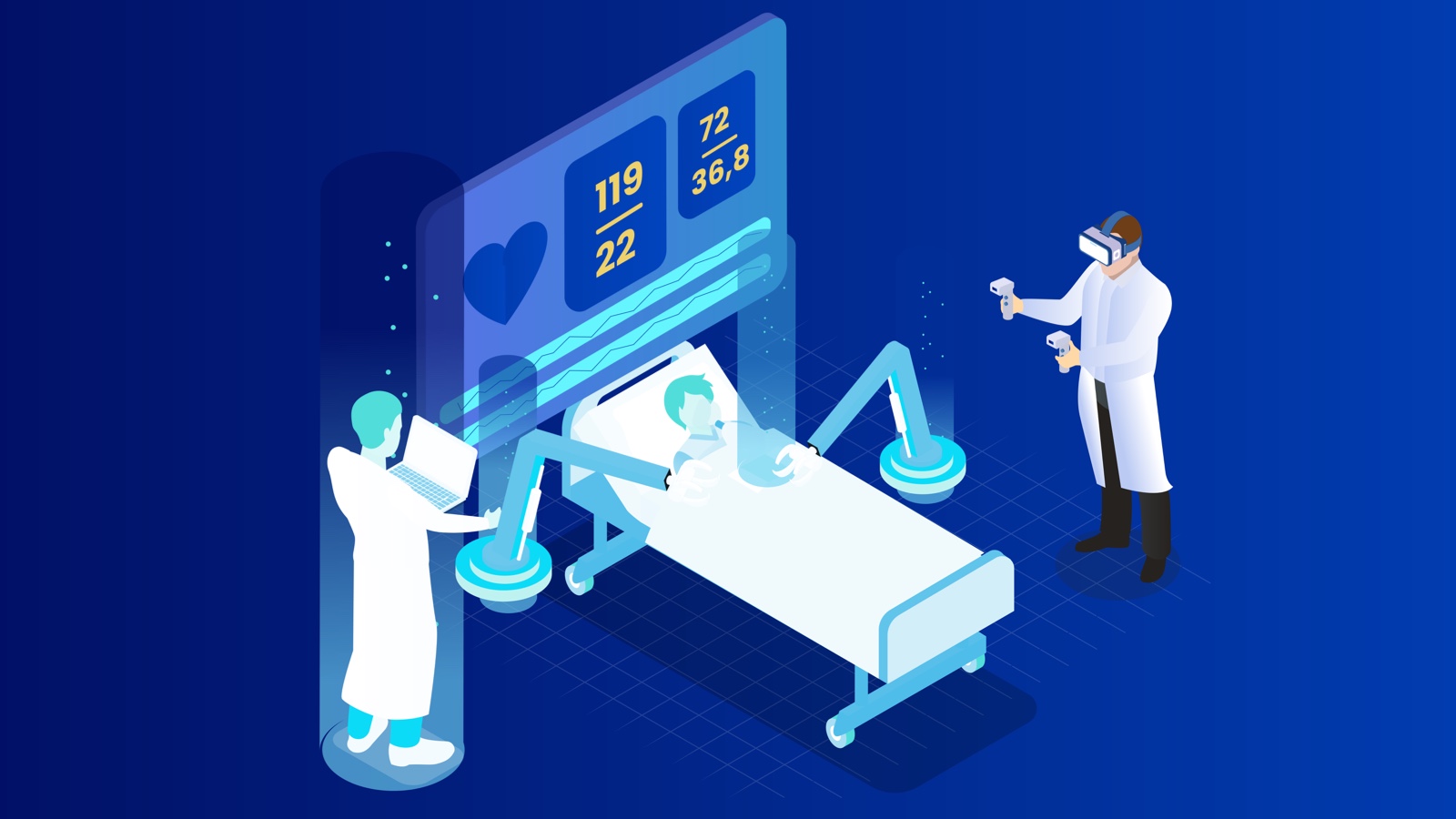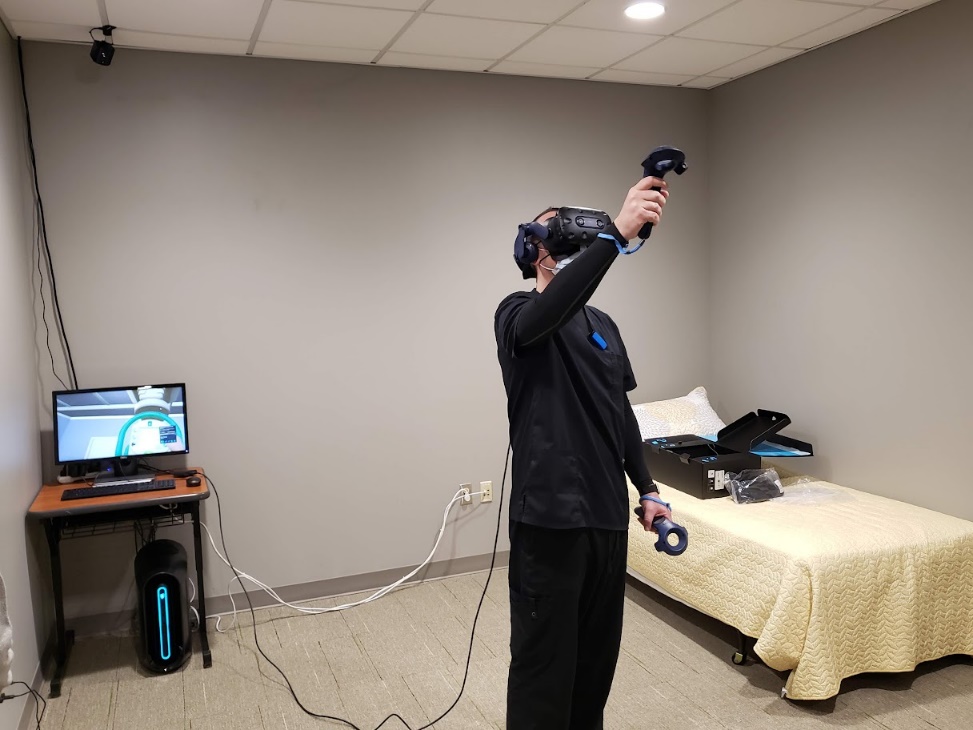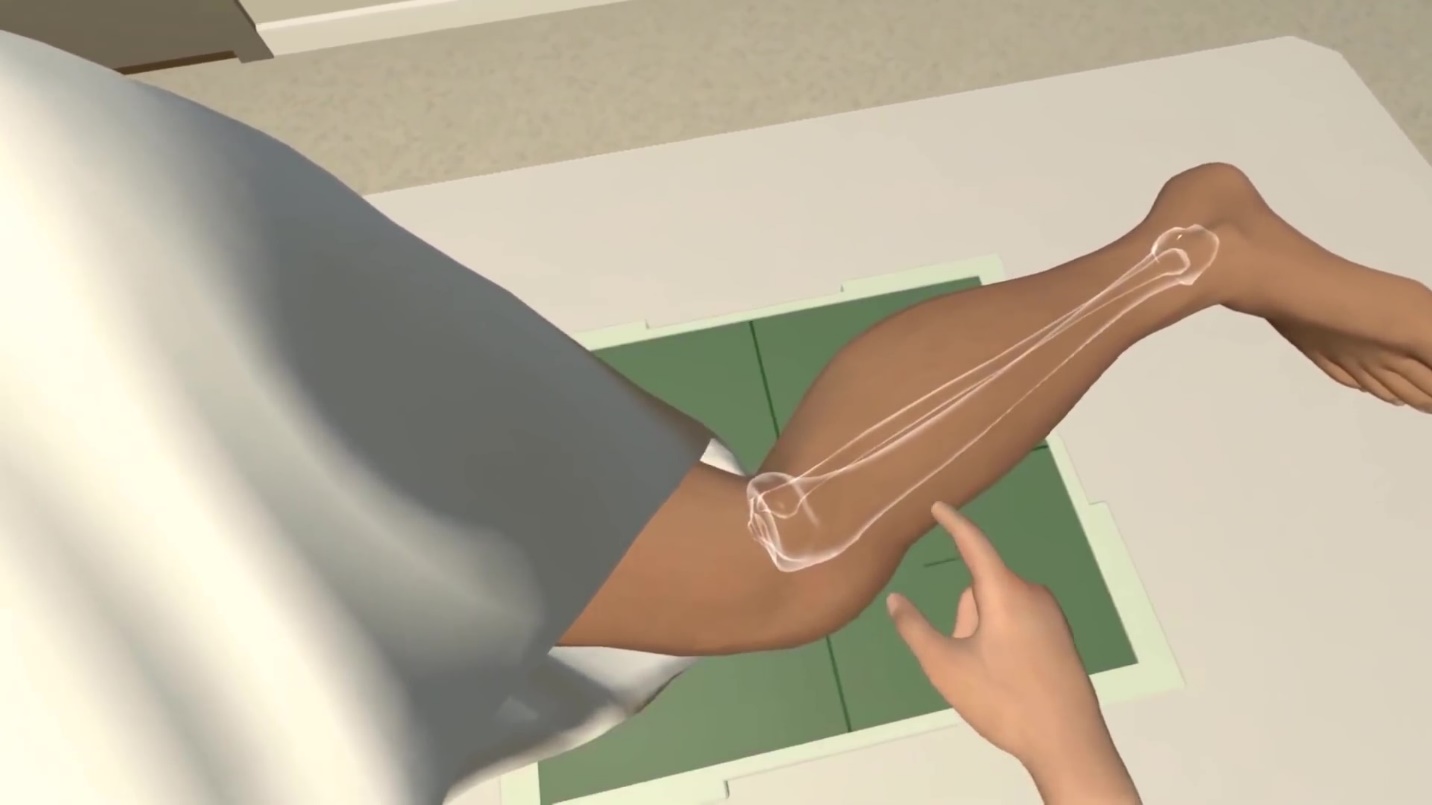VR tools in learning environments can provide students with skills training that would be difficult or impossible in physical labs.

Institutional Profile
Founded in 1964, Montgomery County Community College (MCCC) is a public community college that serves the needs of Montgomery County residents, visitors, and businesses. The college's mission is to offer a high-quality, affordable, accessible education that leads to relevant, rewarding transfer and career opportunities. The curriculum includes more than 100 associate's degrees and certificate programs, as well as customized workforce training and certifications. Students enjoy the flexibility of learning at our Blue Bell Campus, Pottstown Campus, and online. MCCC offers educational programs for learners of all ages and stages of life. As an Achieving the Dream Leader College of Distinction, the institution is positioned at the vanguard of national efforts to remove barriers to access, improve learning outcomes, and increase completion for all students.
Opportunity
While they may still seem futuristic to many educators, artificial intelligence (AI) and virtual reality (VR) are transforming the way we prepare students for real-life careers. In fact, AI and VR have been put to use in many practical applications in classrooms and training facilities. These technologies are being used in many different ways to prepare students for careers in a wide range of academic and workplace disciplines. VR tools are being used to train employees in health care, manufacturing, law enforcement, retail, and countless other industries. Police training academies use VR to simulate real-life scenarios that require split-second decisions. Construction companies are using VR to train workers to perform tasks typically done at elevation quickly and efficiently without having to enter a dangerous environment.
The applications for VR in education are endless. This technology is catching on in the classroom because of the unique benefits it offers students and educators:
- Practical, career-building experience: Workforce development and internship programs are growing in popularity among students and educators for their ability to prepare students for the workplace. VR complements these programs by providing students with the opportunity to gain hands-on experience practicing the specific functions they will perform on the job without having to leave the classroom. These experiences provide students with confidence in their abilities that will be invaluable when it comes time to work.
- Greater student excitement and engagement: While there's always a place for lectures and taking notes in a classroom, VR offers an alternative to traditional learning environments that has been proven to spark students' interests. VR offers students an active learning experience that is fun and promotes engagement. It provides a break from the typical school day for students and enables them to stand up, move around, and virtually step outside their classroom in ways that energize and inspire them.
- Enhanced learning outcomes for complex tasks: In the past, it was difficult for students to practice complex tasks that will be required of them in the workplace. VR provides students the opportunity to gain experience performing these tasks in a safe, risk-free environment. In industries such as health care and law enforcement, people make split-second, life-and-death decisions. With more practice under their belt, they'll have the confidence to perform these actions when called upon in the real world.
Process
At MCCC, radiography students are using VR technology every day to prepare for careers in the diagnostic imaging field. Alongside real radiography equipment and manikins located in the Radiography Lab, MCCC students take advantage of the opportunity to use VR software each semester in their courses to practice the skills they will need once they move into hospitals and other medical facilities. Selected for its ability to provide supplemental learning opportunities for first- and second-year radiography students in a nearby classroom, Projection Radiography Simulation, developed by Virtual Medical Coaching, was piloted in 2021 in two courses. With the first year primarily funded through CARES Act dollars, the pilot continues through a Perkins grant.
The VR equipment students wear is connected to a desktop computer in the corner of the room by a couple of cables (see figure 1). Wearing a pair of virtual reality goggles strapped to their heads and holding a controller in each hand, students get a fully immersive, hands-on experience virtually taking x-ray images.

During these simulations, students must lift their arms into the air to line up the x-ray tube over top of the relevant part of the body of the digital manikin (see figure 2). After carefully placing the patient into the proper position and adjusting collimation to minimize radiation exposure, the student walks out of the simulated exam room and into the control room, taking care to shut the nonexistent door completely in order to take the x-ray image.

Building from the practice manikin, the application includes assessment modules that offer formative monitoring tools as learners perform in the simulated environment. If students make mistakes, rather than indicate what they did wrong, the system will ask directed questions to help students understand where they have a gap in their knowledge. For example, if a student takes an image with the wrong mAs (milliamperage-second) setting, instead of directly addressing the incorrect action, the post-procedure exam will include questions prompting the learner to reflect on the proper radiation exposures and what could cause an image to appear blurry.
For the module, students receive an overall score that includes their actions in simulation and performance on pre- and post-exams while their x-ray image is collaboratively critiqued in class. These elements, combined with the overall approach, positively reinforce skill development and confidence levels. Quantitative data about each student's performance, such as total time taken, patient radiation dosage, tube rotation, and whether the exam room door was closed, are also sent to radiography professors, who can tailor their lessons to address where students may need additional review of the material.
Outcomes and Lessons Learned
While still in its early stages, this program is already showing positive results. Not only have students enjoyed its addition, but the pass rate for the American Registry of Radiologic Technologists certification exam rose from 85 percent to 100 percent since we instituted the program. Also, in clinical preceptor evaluations between 2021 and 2022, the lowest student competency score rose from 85 percent to 97 percent.
Based on survey data and learner interviews, the pilot was successful in supporting student success by providing a platform that supplemented skill development prior to and alongside clinical placements. Per student reports, the highest-value components of the simulation and pilot were:
- Collaborative x-ray image production
- Ability to capture and critique projections
- Flexibility to repeat difficult procedures at will
All three of these tasks are difficult or impossible to perform in the traditional lab setting due to safety concerns or difficult schedules. With the addition of the virtual simulation, instead of producing images with physical manikins in the lab when supervision was available, students were granted the opportunity to practice on their own or in groups. Because the VR equipment is available during open lab hours, students often use it to brush up prior to course assessments or call out to nearby peers during practice sessions for assistance during a virtual simulation. A majority of students indicated that the immersivity of the simulation boosted confidence in their clinical skills and the operation of equipment when used in tandem with existing machinery in the lab. In fact, one student reported that the VR simulation enabled them to more easily learn the procedure and feel more comfortable at clinical. One important lesson learned from the pilot is that the VR software offers many opportunities for students to practice outside the Radiography Lab.
From a faculty perspective, the pilot has shown positive outcomes in several important ways:
- Greater visibility of transfer of knowledge between multiple radiography courses when critiquing taken x-ray images
- Heightened critical-thinking skills due to the larger variation of procedural scenarios allowed outside the lab through flexible VR simulations
- An increase of teachable moments because the simulation allows students to produce suboptimal images that lead to increased discussion for improving their practice
Two primary criticisms from learners were motion sickness while performing procedures in virtual reality and an overall discomfort in their personal expertise with the immersive technologies. While continued use and more training opportunities and documentation helped alleviate both these concerns, a few students were more comfortable with the personal computer version of the application. This version of the simulation software, which could be installed on any modern computer, offered the same experience as its VR counterpart but could be completed with a keyboard and mouse. While this version was always available to students, the VR version was overwhelmingly preferred due to its immersive environment and more intuitive controls. However, a few students who struggled with the virtual reality hardware or did not travel to campus often could complete all their assigned coursework, supplemental projections, and assessment modules on their own time away from the VR lab on their personal computers.
Another criticism of the virtual simulation was losing the ability to palpate. Palpation—examining by physical touch—is a crucial skill that allows practitioners to locate various bony landmarks necessary to adequately position a patient. The VR simulation provided a view that allowed them to see underlying bone structures (see figure 3), but due to the lack of tactile feedback, these skills needed to be covered in the physical lab. It was in moments like these that students reported they felt that simulation was best utilized as a supplemental resource, to be used in tandem with the traditional lab setting instead of as a replacement for it.

AI and VR have a firm place in the future of education, and academic institutions should do what they can to advance the use of these tools, not resist them. While they may look quite different from traditional learning tools, these capabilities offer too many tangible benefits to ignore. Educators of the future will embrace this technology and find new ways to leverage it in the classroom. At Montgomery County Community College, we're proud to serve as one of the first educational institutions pushing this technology forward and will continue to seek new opportunities to leverage it. We are excited to see how AI and VR can benefit our students now and in the future.
Matt Kilbride is Instructional Technology Simulation Specialist at Montgomery County Community College.
Dana Smith is Radiography Program Coordinator/Director at Montgomery County Community College.
© 2023 Matt Kilbride and Dana Smith.
